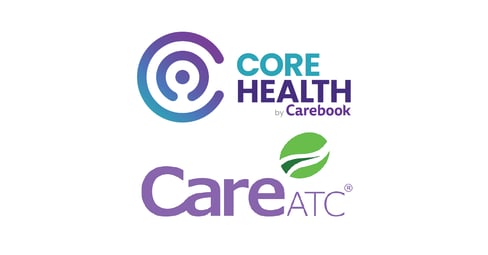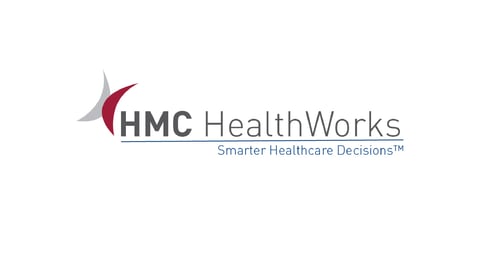Top Population Health Management Tools You Should Know

Reactive care looks something like this—a healthcare provider treats individual patients diagnosed with the flu every winter. As infection rates increase, this places more financial and operational strain on the organization and can lead to increased illness progression. Over time, this causes provider burnout and compromised population health.
On the other hand, population health management (PHM) takes a proactive approach to managing and addressing the health needs of a defined population. It relies on the systematic collection and analysis of data to identify at-risk populations and complete three core objectives: optimize care delivery to drive health outcomes at scale, enhance individual patient care, and reduce costs.
Because PHM requires so many moving parts, your healthcare organization must have a system that can keep up with demand. This is where PHM software comes into play. In this guide, we’ll explore three PHM software components that will transform your organization’s approach to PHM. Let’s begin!
Risk adjustment analytics
Risk adjustment is used by health plans and governing bodies such as CMS and state Medicaid programs to assess a member’s risk based on their condition history and demographic factors to project their cost; these scores are then used to set premiums paid to Medicare Advantage and Medicaid managed care plans and benchmark cost targets for Accountable Care Organizations. Risk adjustment tools support organizations in ensuring that risk-bearing conditions are documented accurately and comprehensively to drive accurate scoring.
Using risk adjustment software involves a three-step process that optimizes outcomes for payers, patients, and providers. Let’s review the process with an example of a diabetic patient:
- Suspect risk-bearing conditions, using integration and analysis. Risk adjustment tools can suggest conditions for recapture based on diagnosis codes billed in prior years and can propose novel conditions based on treatment history and other clinical markers. In our example, the software would suspect diabetes based on past claims, insulin prescriptions, or elevated HbA1c values evidenced in lab results.
- Engage using automated tools such as personalized follow-up instructions delivered through text messages. This may be a reminder for the patient to schedule their Annual Wellness Visit with their primary care physician to ensure that their chronic conditions can be assessed and managed appropriately. Bringing a patient in to see their provider is critical to documenting conditions as appropriate.
- Prompt providers to assess identified risk gaps at the point of care. In order to ensure documentation, many organizations use workflow tools to track high-priority risk gaps before, during, and after the visit, ensuring the condition is assessed and documented appropriately.
Risk-suspecting applications leverage integrated payer and Electronic Health Record (EHR) data sets, combining comprehensive claims history with rich clinical data such as lab results, vitals, and more.
Social Determinants of Health (SDoH) integration
Health.gov defines SDoH as “the conditions in the environments where people are born, live, learn, work, play, worship, and age that affect a wide range of health, functioning, and quality-of-life outcomes and risks." In other words, SDoH describes the factors outside of a patient’s biology that affect their health. For example, a patient who struggles to afford medication and lacks transportation faces significant barriers in engaging effectively in their care and adhering to care plans without meaningful support.
These are the twelve SDoH factors:
- Employment security measures employment status and experience.
- Psychological circumstances that take into account emotional state.
- Housing security determines if a patient has a consistent place to call home.
- Social adversity considers discrimination or persecution related to health.
- Transportation measures a patient’s ability to travel by car or public transit.
- Food security determines when and where a patient’s meals are coming from.
- Education and illiteracy measures a patient’s education and comprehension levels.
- Occupational risk determines the level of safety a patient experiences on the job.
- Economic insecurity considers a patient’s ability to manage medical and life expenses.
- Lack of support takes into account friends, family, and social networks.
- Upbringing issues measures how childhood experiences contribute to health.
- Language determines reading comprehension and communication ability.
PHM software uses SDoH insights to contextualize individual patient health and transform the traditional model of healthcare delivery. This may be done at the community or individual level:
Community Interventions
Analysts leveraging SDoH in PHM software may identify a population of diabetics experiencing poor medication adherence, resulting in poor outcomes. In combining this data with SDoH, the team may determine that members of the population face food insecurity and economic insecurity and that these members are clustered in several neighborhoods.
From there, the health organization may team up with community partners to provide preventive solutions such as nutrition programs and advocate for policies to improve neighborhood walkability and access to safe outdoor spaces for physical activity.
Individual Interventions
Population health leaders may design care management and outreach programs around SDoH. For example, a health system may reach out to patients to inform them about nutrition programs and offer the support of a care manager or registered dietician. This information may also be available at the point of care to inform a provider of the barriers to care a patient may face.
Electronic Health Record (EHR) integration
Departmental fragmentation, vendor specific-platforms, and a lack of interoperability can silo electronic health record (EHR) data. And, even once the patient data is consolidated into one place, it still must be supplemented with external data to offer a comprehensive view of patient needs.
Integrating EHR data into your PHM solution is key to establishing a high-quality and up-to-date patient data foundation to improve risk and quality gap closure and inform initiatives to improve patient outcomes. Key opportunities of EHR integration include:
- Incorporating a rich and low-latency dataset into analytics and workflow tools, including data such as labs results, vitals, and more. For patients who’ve had coverage under multiple health plans or been uninsured, EHR records can provide the most comprehensive history of care.
- Gain insight into upcoming appointments to stratify patients based on planned engagement and inform pre-visit planning
- Pull insights such as risk and quality gaps into the point of care for intervention with integration of PHM data back into the EHR.
Although the benefits of an integrated EHR are incredibly impactful, implementation can pose a challenge for many organizations. Compatibility concerns between different systems, staff adoption, and return on investment can cause hesitation.
However, if your organization does choose to implement this solution, you can avoid these concerns by partnering with a reputable vendor. Specifically, look for one with extensive experience in the Health IT space and one with a reliable performance track record.
Modern digital solutions reimagine the way healthcare is delivered. In this exciting time of technological health innovation, make sure your team stays on top of upcoming trends. This way, you can create more efficient, proactive workflows that improve patient care and employee engagement at your organization.
In addition to improving patient care, there’s another population you can reach with targeted care: your employees. Platforms that manage health and wellness programs empower employers to deliver wellness to their teams, either by implementing their own programs or by choosing from the solution’s wellness content. Keep these tools and integrations in mind when searching for an all-encompassing platform that meets patient and team needs.
Discover how CoreHealth's corporate wellness platform can support any type of population's health and well-being.
Contact our team today for a demo!
About The Author
CoreHealth Marketing
CoreHealth Technologies Inc. is a total well-being technology company trusted by global providers to power their health and wellness programs. Our wellness portals help maximize health, engagement, and productivity for 3+ million employees worldwide.



